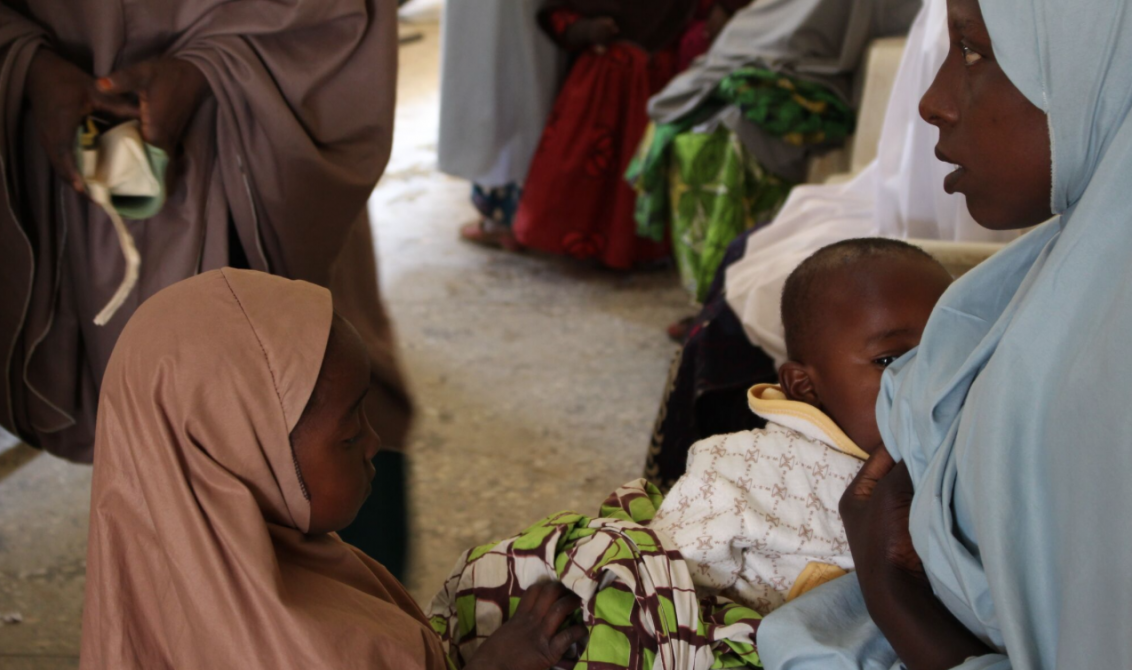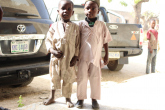
Being city born and bred – in Lagos, to be precise – it’s difficult to imagine anything more different than life in rural North West Nigeria.
The Kano health initiative was only my second trip to Kano State and was vastly different from the first. My visit a few years ago was a day trip to Kano City for a friend who was “turbaned” as a high chief in Kano. It was all pomp and circumstance and a world away from the poor, uneducated women and children we interacted with on this visit.
Surprisingly to me, Kano State is a hive of agricultural activity. As our car sped by, we saw mounds of rice, beans, and millet on the roadside. Oranges, watermelons, tomatoes, rice, peanuts, maize, and soybeans are some of the crops the state produces and exports to other parts of Nigeria.

In the midst of all this apparent agricultural bounty, we encounter hundreds of women and children who are either malnourished or simply a bout of malaria or diarrhea away from full-blown malnutrition.
Health and wellbeing happen as the result of a complex interplay of socioeconomic conditions, education, health literacy, culture and access to quality affordable healthcare. In Nigeria, the outcome of this interplay was never more obvious than at the Garun Mallam and Rano Primary Health Care Centres we visited in rural Kano State.
There are three main delays in seeking health care that affect the survival of mothers, newborns, and children in Sub-Saharan Africa.
- Delays in recognizing problems and deciding to seek care
- Delays in transportation to reach appropriate care
- Delays in receiving appropriate care at the health facility
You can see how all of the factors that impact health and wellbeing come into play in causing these delays in rural Northern Nigeria.

The focus of The HealthZone And IWEI Mother and Child Initiative on Nov 8 and 9, 2017 was to assess and improve the nutritional status of women and children in the two LGAs we visited. As teaching and screening the participants got underway, some things became quickly obvious.
Most of the women are illiterate. Most married in their early teens according to local custom. None of them practice birth control or family planning – as evidenced by our meeting several 20 and 21-year old women with three or four children each. Many women have nine to eleven kids.
All of them live below the poverty line, unable to provide healthy nutrition for themselves or their children. The primary health care centres serving the two communities are staffed with unskilled health workers and lack basic equipment such as blood pressure measuring machines.

This scenario repeats itself across the length and breadth of the country, in rural and urban settings. It comes as no surprise therefore that malnutrition is the “silent crisis” in Nigeria – one of several health crises demanding immediate attention.
Nigeria’s human capital – the men, women, and children who call Nigeria ‘home’ – is her most valuable asset. Decades of failed leadership, neglect, poor strategic planning, implementation failures, and corruption on the part of federal and state governments endanger this vital asset.
Without healthy, educated and skilled human capital, Nigeria will not achieve the potential that could be hers in the technology-driven twenty-first century.


Dr. Who
So…what’s the way forward? I find that we treat healthcare like internal medicine specialists treat disease. They talk a lot about the pathophysiology, the elaborate on signs and symptoms and give them highfalutin terminologies, they speak in prose as they discuss complications and only spend a few minutes to treat the condition. Not because knowing the pathology is bad…but understanding the pathology should help chart the path to the patient’s recovery.
I agree that “health and wellbeing happen as the result of a complex interplay of socioeconomic conditions, education, health literacy, culture and access to quality affordable healthcare” and we have governments that are either resource constrained or incapable of appreciating the depth of the problem but where do we go from here? How can communities, society groups, private enterprises play a role in creating sustainable solutions to these issues? Healthcare requires ownership. How do we encourage community partixipation that breaks the barrier created by generations of tradition, age-old religion and illiteracy?
Toju Chike-Obi, MD
Thank you for your comment. I believe one of the ways forward is to engage immunities at the individual level through small groups to accomplish the following:
– educate on health promotion and disease prevention practices that are culturally relevant
– develop community health advocates from within communities for ongoing education in appropriate and favorable health practices
– address cultural practices that negatively impact health outcomes including the failure to educate girls
– involve communities in the development of locally sustainable economic ventures
We don’t have to re-invent the wheel. Successful models abound throughout the world which can be appropriated to fit within our cultural context.
Concerned health professionals and individuals must become citizen advocates raising other citizen advocates. We must roll up our sleeves and get involved, not just in advocating for health policy follow-through but in guiding our local communities at the grassroots level.